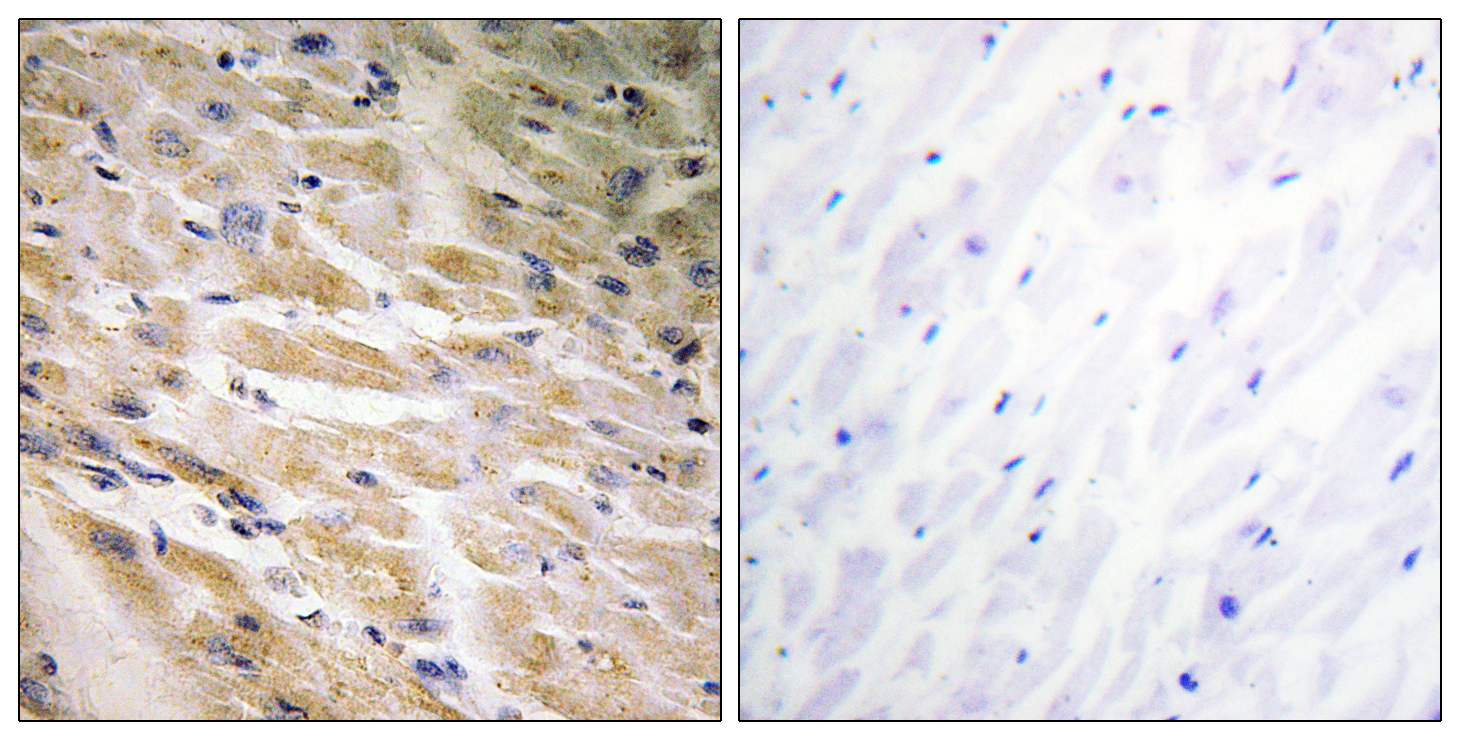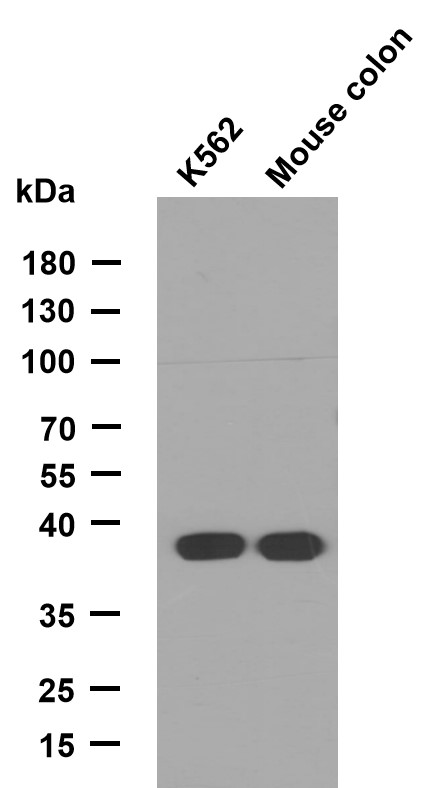MEF-2C (phospho Ser387) Polyclonal Antibody
- Catalog No.:YP0956
- Applications:IHC;IF;ELISA
- Reactivity:Human;Mouse
- Target:
- MEF2C
- Fields:
- >>MAPK signaling pathway;>>cGMP-PKG signaling pathway;>>Apelin signaling pathway;>>Oxytocin signaling pathway;>>Parathyroid hormone synthesis, secretion and action;>>Transcriptional misregulation in cancer;>>Fluid shear stress and atherosclerosis
- Gene Name:
- MEF2C
- Protein Name:
- Myocyte-specific enhancer factor 2C
- Human Gene Id:
- 4208
- Human Swiss Prot No:
- Q06413
- Mouse Gene Id:
- 17260
- Mouse Swiss Prot No:
- Q8CFN5
- Immunogen:
- The antiserum was produced against synthesized peptide derived from human MEF2C around the phosphorylation site of Ser387. AA range:353-402
- Specificity:
- Phospho-MEF-2C (S387) Polyclonal Antibody detects endogenous levels of MEF-2C protein only when phosphorylated at S387.
- Formulation:
- Liquid in PBS containing 50% glycerol, 0.5% BSA and 0.02% sodium azide.
- Source:
- Polyclonal, Rabbit,IgG
- Dilution:
- IHC 1:100 - 1:300. ELISA: 1:10000.. IF 1:50-200
- Purification:
- The antibody was affinity-purified from rabbit antiserum by affinity-chromatography using epitope-specific immunogen.
- Concentration:
- 1 mg/ml
- Storage Stability:
- -15°C to -25°C/1 year(Do not lower than -25°C)
- Other Name:
- MEF2C;Myocyte-specific enhancer factor 2C
- Molecular Weight(Da):
- 51kD
- Background:
- This locus encodes a member of the MADS box transcription enhancer factor 2 (MEF2) family of proteins, which play a role in myogenesis. The encoded protein, MEF2 polypeptide C, has both trans-activating and DNA binding activities. This protein may play a role in maintaining the differentiated state of muscle cells. Mutations and deletions at this locus have been associated with severe mental retardation, stereotypic movements, epilepsy, and cerebral malformation. Alternatively spliced transcript variants have been described. [provided by RefSeq, Jul 2010],
- Function:
- alternative products:Additional isoforms seem to exist,developmental stage:Expression is highest during the early stages of postnatal development, at later stages levels greatly decrease.,domain:The beta domain, missing in a number of isoforms, is required for enhancement of transcriptional activity.,function:Transcription activator which binds specifically to the MEF2 element present in the regulatory regions of many muscle-specific genes. Controls cardiac morphogenesis and myogenesis, and is also involved in vascular development. May also be involved in neurogenesis and in the development of cortical architecture (By similarity). Isoform 3 and isoform 4, which lack the repressor domain, are more active than isoform 1 and isoform 2.,PTM:Acetylated by p300 on several sites in diffentiating myocytes. Acetylation on Lys-4 increases DNA binding and transactivation.,PTM:Phosphorylation on Se
- Subcellular Location:
- Nucleus . Cytoplasm, sarcoplasm .
- Expression:
- Expressed in brain and skeletal muscle.
- June 19-2018
- WESTERN IMMUNOBLOTTING PROTOCOL
- June 19-2018
- IMMUNOHISTOCHEMISTRY-PARAFFIN PROTOCOL
- June 19-2018
- IMMUNOFLUORESCENCE PROTOCOL
- September 08-2020
- FLOW-CYTOMEYRT-PROTOCOL
- May 20-2022
- Cell-Based ELISA│解您多样本WB检测之困扰
- July 13-2018
- CELL-BASED-ELISA-PROTOCOL-FOR-ACETYL-PROTEIN
- July 13-2018
- CELL-BASED-ELISA-PROTOCOL-FOR-PHOSPHO-PROTEIN
- July 13-2018
- Antibody-FAQs
- Products Images

- Enzyme-Linked Immunosorbent Assay (Phospho-ELISA) for Immunogen Phosphopeptide (Phospho-left) and Non-Phosphopeptide (Phospho-right), using MEF2C (Phospho-Ser387) Antibody

- Immunohistochemistry analysis of paraffin-embedded human heart, using MEF2C (Phospho-Ser387) Antibody. The picture on the right is blocked with the phospho peptide.



